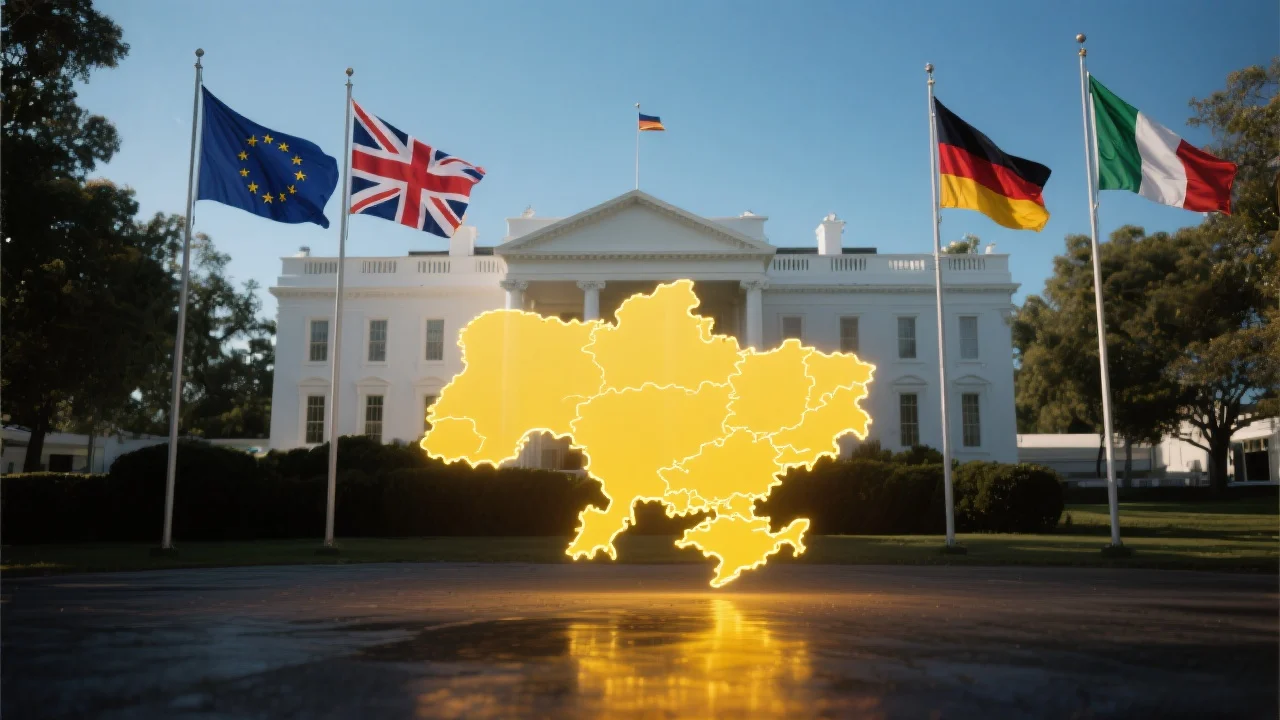Watch the LIVE STREAM Here. Will Zelensky wear a suit? If he does let’s hope it’s not tan.

A Coalition Lands in Washington
Ukrainian President Volodymyr Zelensky arrived in Washington not as a solitary wartime leader but as the nerve center of a traveling European coalition.
At least seven heavyweights of European politics are joining him in the White House: British Prime Minister Keir Starmer, French President Emmanuel Macron, German Chancellor Friedrich Merz, Italian Prime Minister Giorgia Meloni, European Commission President Ursula von der Leyen, Finnish President Alexander Stubb and NATO Secretary General Mark Rutte. Their presence sends a message that is direct and nearly impossible to miss. Europe does not intend to let Ukraine be isolated in negotiations with the United States.

The Alaska backdrop
The summit follows directly on the heels of Trump’s controversial meeting with Vladimir Putin in Alaska. There, according to officials briefed on the talks, Putin reiterated his demand for full control over the occupied Donetsk and Luhansk regions as a condition for peace. Trump gave signals he was willing to entertain the idea, sparking alarm in both Kyiv and European capitals. For them, the stakes are not just Ukrainian land, but the precedent it would set that force can redraw international borders. The memory of earlier concessions in history weighs heavily across the continent, and leaders are determined not to see new lines carved through Ukraine without collective consent.
Europe’s insurance policy
By physically joining Zelensky in the Oval Office, European leaders are creating a kind of insurance policy against unilateral decision making. Von der Leyen spoke publicly before the trip, making it clear that Europe views Ukraine’s borders as inviolable. Macron echoed her sentiment, with Starmer and Merz reinforcing the line in joint calls leading up to the meeting. Together, they represent a formidable bloc that is positioned to push back on any deal perceived as premature or tilted in Moscow’s favor. With NATO’s new chief Mark Rutte in the room, the symbolism becomes sharper still. His presence raises the specter of security guarantees and collective defense, topics Trump has a history of criticizing.
Zelensky’s balancing act
Zelensky now faces a difficult diplomatic tightrope. His last White House meeting with Trump ended in confrontation, with U.S. aid briefly thrown into question and Kyiv left scrambling. He is arriving this time buffered by Europe, which strengthens his negotiating position but also risks antagonizing Trump, who is famously reticent to negotiate in a room crowded with other power brokers. Zelensky’s challenge is twofold: make sure Ukraine’s voice is amplified by Europe without the optics tipping into the perception that he has come to Washington under a European wing.
A coalition in waiting
Behind this show of unity lies a bigger plan. European officials have circulated ideas of a “coalition of the willing” that would place Western troops on the ground in Ukraine to monitor and enforce any future settlement. Early signals suggest Trump has been more open to U.S. involvement in such a plan than many expected, even hinting that American air support could accompany it. If this formulation materializes, it would be the closest thing yet to the kind of NATO-style security umbrella Ukraine has long sought. But nothing is settled, and the prospect of Trump pivoting quickly should never be underestimated.
The test of NATO unity
The gathering at the White House marks a pivotal moment not just for Ukraine’s future but also for the coherence of NATO itself. If the meeting produces a path that satisfies both Trump’s desire for a deal and Europe’s insistence on borders that stand firm, it will be seen as a breakthrough. If, however, divisions widen in front of cameras, it could mark one of the starkest public fractures in transatlantic unity since the Iraq War.
What is already certain is that Zelensky has rewritten the terms of his engagement with Washington. He will not be meeting Trump alone, and by surrounding himself with Europe’s most influential leaders, he has shifted the stage from a bilateral negotiation to a global summit. The outcome, whether breakthrough or breakdown, could realign not just the war in Ukraine, but the architecture of the Western alliance itself.
